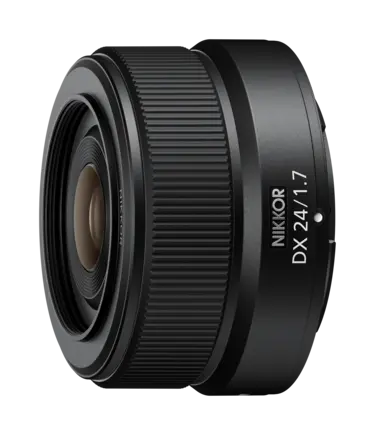What is a prime lens?

A prime lens is a lens with (fixed) focal length that cannot be changed, offering fine-tuned optical performance, beautiful background blur and razor-sharp image quality
NIKKOR Z mount lenses fall into two categories: zooms and primes. A prime lens is a lens with (fixed) focal length that cannot be changed. Zooms, on the other hand, allow you to change the focal length across a predefined zoom range.
Prime lenses are generally smaller and more compact than zooms. As prime lenses have an optical formula optimised for one specific focal length, they produce razor-sharp images with fewer visual aberrations compared to zooms (which must accommodate multiple focal lengths).
Nikon Team

Prime lenses are almost always faster than zooms because they offer wide apertures – the opening in your lens through which light passes to enter the camera. A wide aperture allows you to shoot when there is less light and also creates a shallow depth of field, meaning you get that lovely background (or foreground) blur, or bokeh, while your subject remains in focus. Some Nikon primes boast maximum apertures below f/2.8, such as the NIKKOR Z 50mm f/1.8 S and NIKKOR Z 50mm f/1.2 S. And the NIKKOR Z 58mm f/0.95 S boasts a f/0.95 aperture! Don’t forget that the lower the f-stop number the bigger the aperture and the greater the blur.
Many photographers love prime lenses for their bokeh. Landscape photographer George Karbus shot his daughter with the NIKKOR Z 28mm f/2.8 prime lens to get a perfect shallow depth of field with plenty of foreground bokeh in the bluebell woods (see two images above).

Primes suit a variety of genres, including action, landscape, close-up, low-light, portrait, wedding, street photography — and, of course, video!
Wedding photographer Tali Pelosi and videographer François Lamoureux love primes because of their image quality and wider apertures. “I can open apertures as wide as f/1.8 and not have any issues with backlight when shooting at night or in indoor locations,” says Tali.
Urban sports photographer Little Shao often uses long focal prime lenses, such as the AF-S NIKKOR 105mm f/1.4E ED, to focus in on the action.

The new NIKKOR Z DX 24mm f/1.7 is the first DX prime lens for the Nikon Z mount and offers access to beautifully exaggerated bokeh at an amazing price. Lenses with DX in the title have been designed with DX-format cameras in mind (such as the Nikon Z fc, Nikon Z 30 and Nikon Z 50). DX cameras and lenses are the perfect beginner option, rather than full-frame FX cameras (such as Nikon Z 5, Nikon Z 6II, Nikon Z 7II and Nikon Z 8), due to their affordability and performance. Check out the differences between DX and FX cameras here.
For in an in-depth look at choosing lenses, click here. For further information on the new NIKKOR Z DX 24mm f/1.7, read our guides here.
Prime lenses at a glance:
- Wide aperture (as low as f/0.95) lets in more light – perfect for low-light situations.
- Sharpens your technique: a prime lens means you have to move around to achieve the shot you want.
- Sharper image quality as there are fewer components within the lens.
- Compact, lighter and often more affordable than zoom lenses.
- Achieve the perfect bokeh as wide aperture creates a shallow depth of field, meaning your background is blurred and your subject always stays in focus.
- Wider aperture allows lower ISO and shutter speed so you can freeze motion easier.
Featured Products
Discover the NIKKOR Z DX 24mm f/1.7

For limitless creativity




